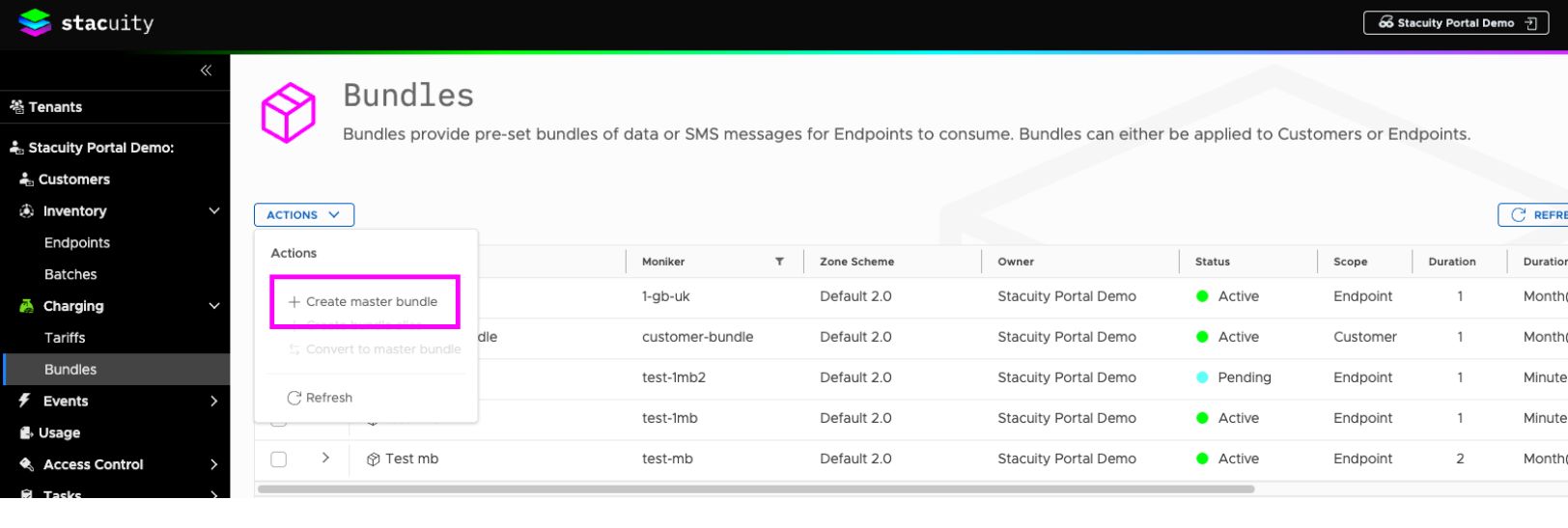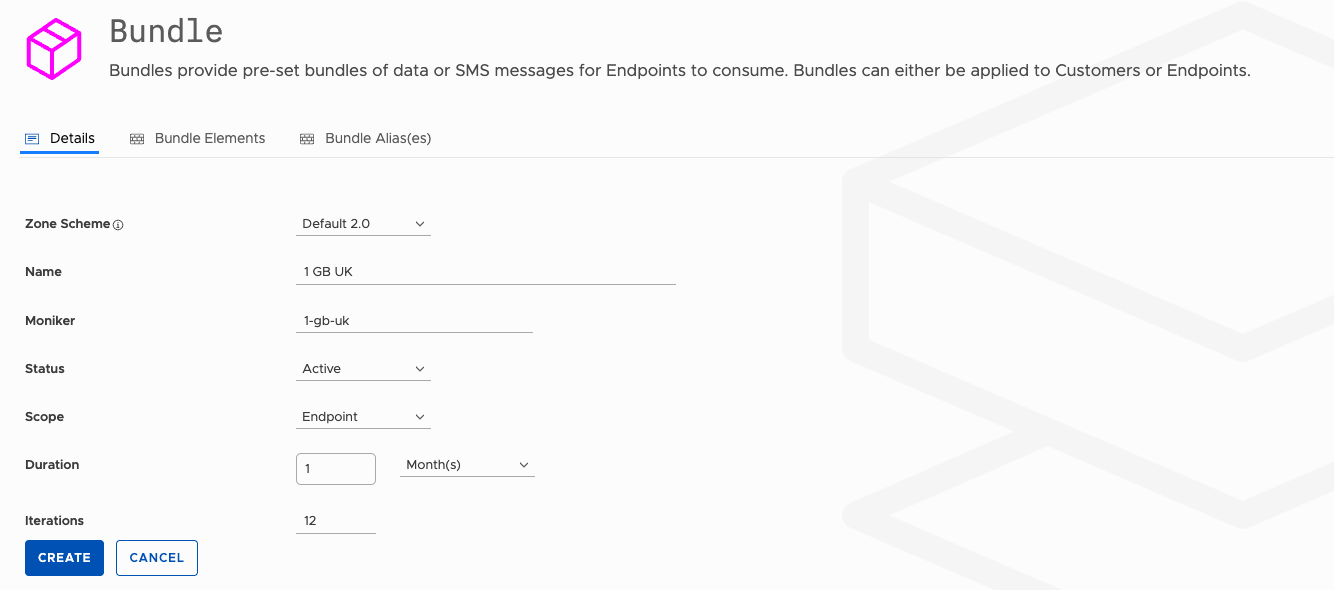Creating and Managing Bundle
Understanding Bundle Architecture
Bundle Definitions vs Instances
When you create a bundle in the Stacuity platform, you're actually creating what we call a "master bundle" - think of it as a template or blueprint. Each time you apply that bundle to an endpoint, the system creates a "bundle instance" which is essentially a copy of your original template. This is brilliant because it means you can create one master bundle (say, a 15GB monthly bundle) and apply it to multiple endpoints without having to recreate it every time.
Starting the Bundle Creation Process
- Navigate to Charging → Bundles
- Click Actions → Create master bundle

- Define you bundle structure
- Zone Scheme: Defines the geographic and network structure for coverage - Our default Zone scheme is Default 2.0
- Name : A human readable name
- Moniker: Unique identifier for the alias
- Status:
- Pending : This bundle is still being created, and cannot currently be used on an endpoint
- Active : This can be used on endpoints
- Suspended: this can no longer be used on any endpoints.
- Scope: This is important, there are 2 choices here
- Customer: this bundle can be assigned to all the endpoints within this customer
- Endpoint: this bundle can be assigned to a specific endpoint.
- Duration: How long each bundle instance remains valid : eg: 1 month
- Iterations: How many consecutive periods the bundle covers

When you first create a bundle, you're essentially creating an empty container with basic settings like duration and scope. Think of it like creating a new data plan template - you've got the name and basic structure, but no actual data allocations yet. These data allocations are called elements.
Updated 4 months ago
Add Bundle Elements
